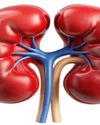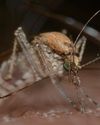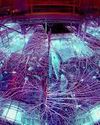Let's know why we should include Beet Root in our diet?
March-April 2017
|Scientific India
The beetroot is the taproot portion of a plant named beet plant. It is not chiefly cultivated in India, it's a crop of Europe but grown at small scale in some areas of India.

When we consider the total sugar production in world , 35% of the sugar is produced from sugar beet and the contribution of India in its production is approximately zero because the climatic condition of India is not favorable for sugar beet, so its basically crop of European countries. Beetroot's medicinal properties are well known. It is rich source of iron and it has great quality of healing. It was first cultivated by the Romans. In19th century it became a famous vegetable because is discovered that sugar can be extacted from it. Now a days America is at top most position in production of beet root then Russia, France, Poland and Germany comes in this chain. In European countries many of the dishes are made up by beet root t, the soup of beet is known as “Borscht”. Beet root is widely use in making menus more attractive. Apart from being delicious and attractive its medicinal value can not be ignored. Because it belongs to the same family as spinach and chard, its leaves and root can be eaten. Beet root leaves have a harsh taste but the round root is sugary taste. Generally beet root has purple color, but also found in white and golden color. It has high sugar percentage, it is pleasant eaten raw but basically it cooked or pickled. Beetroot is of extremely dietary value; particularly the leaves are rich in calcium, iron and vitamins A and vitamin C. Beetroots are rich source of folic acid, iron and fair source of fibre, manganese and potassium. The leaves should not be thrown; they can be cooked as spinach. Beetroots are used for medicinal purposes, mainly for diseases related to liver because they helpful in stimulating the detoxification function of the liver.
هذه القصة من طبعة March-April 2017 من Scientific India.
اشترك في Magzter GOLD للوصول إلى آلاف القصص المتميزة المنسقة، وأكثر من 9000 مجلة وصحيفة.
هل أنت مشترك بالفعل؟ تسجيل الدخول
المزيد من القصص من Scientific India
Scientific India
Japanese physicists were the first to measure the most tolerant entanglement state, the W state
There are many unusual things that happen in the world of quantum physics.
3 mins
September - October 2025

Scientific India
The Fifth Force: Could It Unlock the Secret of Dark Matter?
What if the universe is powered by a force we've never seen before? For centuries, science has explained nature with four fundamental forces.
3 mins
September - October 2025

Scientific India
A flu test you can chew
As flu season nears in the northern hemisphere, scientists are exploring a surprising new way to detect infection: through taste.
1 mins
September - October 2025

Scientific India
Lab-Grown Kidney Brings Artificial Organ Dream Closer to Reality
In a major leap toward bioengineered organ replacement, scientists have successfully grown human kidney 'assembloids' in the laboratory that mimic key structural and functional features of natural kidneys.
1 min
September - October 2025

Scientific India
Your pumpkin might be hiding a toxic secret
Pumpkins, squash, zucchini, and other members of the gourd family have a surprising trait: they can take up pollutants from the soil and store them in their edible parts.
1 mins
September - October 2025

Scientific India
2025 Nobel Prize in Physics Reveals Quantum Secrets in Superconducting Circuits
The 2025 Nobel Prize in Physics has been awarded to John Clarke, Michel H. Devoret, and John M. Martinis for their pioneering experiments that brought quantum mechanics from the invisible atomic world to the macroscopic scale a system large enough to hold in your hand.
1 mins
September - October 2025

Scientific India
Genomic Evidence Redefines the Evolutionary Age of Mosquitoes
A new genetic analysis has shaken up what we thought we knew about one of humanity's most notorious pests the mosquito.
1 min
September - October 2025

Scientific India
Nobel Prize in Chemistry 2025: Building Molecular Architectures with Room to Breathe
In a scientific breakthrough that bridges molecular design with planetary-scale problems, the 2025 Nobel Prize in Chemistry has been awarded to Susumu Kitagawa, Richard Robson, and Omar Yaghi.
1 mins
September - October 2025

Scientific India
Guardians of Immunity: Nobel Prize 2025 Honors Discoveries that Keep the Immune System in Check
The 2025 Nobel Prize in Physiology or Medicine has been awarded to Mary E. Brunkow, Fred Ramsdell, and Shimon Sakaguchi for their groundbreaking discoveries in the field of peripheral immune tolerance a crucial mechanism that prevents the body's immune system from turning against itself.
1 mins
September - October 2025

Scientific India
'Is cold nuclear fusion feasible?
In early May 1989, two chemists from the University of Utah, Pons and Fleischmann, arrived in Washington, U.S.A. The aim is to present their findings to members of the US Congress.
3 mins
September - October 2025
Translate
Change font size

